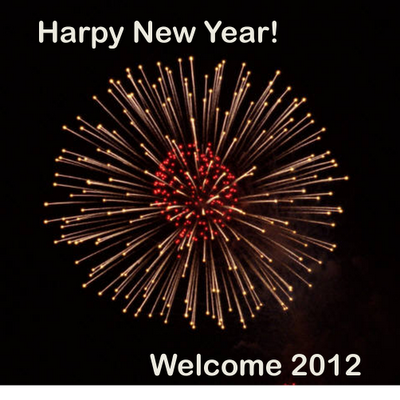
Month: December 2011
-
Make way for the New
 Wishing you and yours a Happy, Healthy, Harpy New Year! See you in 2012
Wishing you and yours a Happy, Healthy, Harpy New Year! See you in 2012 -
Repertoire building
Now that you’ve begun to develop the habits of warming up and cooling down (I know you have started building these habits and that you’re not waiting to start this as a set of New Year’s Resolutions!) you can move your focus to other parts of your practice and development. We practice to improve our ability to play and to develop our repertoire. You can never have enough repertoire – just when you think you have all the music you need ready to go, someone will book you for one half hour longer than you can go or you have so many tunes that you can’t possibly practice them every day…you’ll get to the point (if you haven’t already) that you can’t practice them each week. And if you don’t practice them – I promise you, they will desert you in your time of greatest need.
So you need to build your repertoire. And for this, as in all things, you should have some sort of plan. It can be a loose plan – but you still need some sort of plan. If you are studying regularly with a teacher, your plan may come down directly from your lessons. If you are not regularly studying with someone, you need to take more responsibility for planning. How many tunes do you want to learn this year? What types of tunes? What kind of set lists are you trying to build (are you working toward weddings? Parties? Stage sets? School presentations? Storytelling? Teaching? Therapeutic settings? Regardless of the venue and audience, you need to build a repertoire and you should also be adding to it over time. Even if you don’t play a regular gig, you need to keep your repertoire fresh so you can keep yourself fresh.
Write down your plan and your goals so you can refer to them. You want to make sure you don’t get off track. Be sure to check your progress. It’s ok if your goals are modest – most of us need to be reasonable. Use your overall plan to select the tunes you’re going to add to your repertoire. If you have limited time, focus on the music you “need” to fill holes you may have in putting a gig together. If you have unlimited time, learn what you like when you feel like it.
And of course, insert learning, refining, and perfecting your new tunes into your practice schedule (and goals) so that you make consistent progress toward your goals. This will help you build your repertoire so you can join the ranks of people that say, “I played for six hours before I had to go back to the beginning of my rep”! (just kidding!).
-
Cooling down
Last week we talked about the importance of warming up – a necessary activity each and every time you sit to play. But when you’ve finished your practicing, you need to close with a cool down. Cooling down is always included in a good practice session.

The cool down helps the body recover (remember that musicians are the athletes of the small muscles!). In extreme cases, the cool down helps avoid muscle soreness. It also brings your practice to a controlled end (rather than a frenzied rush off to the next activity on your list) which may help you remember what you’ve learned throughout the practice session.You may know how to cool down from athletics (running slower or walking or stretching) but how do you do that at your harp? It won’t take more than 5 – 10 minutes and it is just as important (and maybe more important) than the warm up was.
To begin your cool down – play more slowly and less loudly. You are still looking for a good closure of your hands to get the relaxation of the muscles that comes from playing with good technique. Finish up your practice time by playing something you like and know every well – something that doesn’t require practice. Relax. Keep your technique strong while you let your play unwind. When you are ready to stop playing move on to stretching. Be sure to stretch as your hands and arms, as well as your neck, back, and legs. We spend so much time focused on our hands that we forget that our entire body is contributing to our playing and needs to be included in our warm up and cool down.
It is important to build your own practice for cool down. When you have build the cool down that works for your, you can perform it like a ritual after each practice session and after each performance. Using a ritual-like approach will help you leave your practice or a performance thoughtfully.
And sometimes, especially during the holiday season, you just don’t have time to spend at your harp. On these days, your practice could be condensed to just a warm-up and cool-down. At least you’ll have sat down to your harp which is better than missing the day entirely.
Cool down and stretch so I won’t have to write you a blog post on icing injuries!


